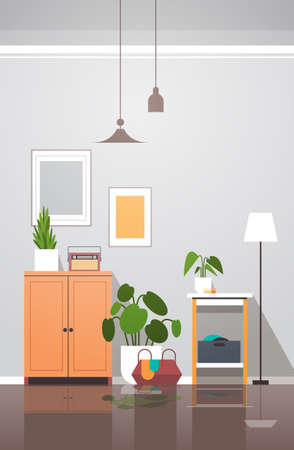Understanding the Psychology of Colour
Colour is far more than a mere visual experience; it is a silent influencer on our psychological state and emotional wellbeing. Over decades, psychological studies have demonstrated that specific hues can evoke distinct feelings, subtly shaping our moods, behaviours, and even decision-making. In Britain, colour has long held a particular cultural significance — think of the soothing pastels of Cotswold cottages or the deep greens and blues prevalent in Victorian interiors. Psychologists suggest that our responses to colour are both universal and culturally nuanced: while blue often promotes calmness and trust worldwide, here in the UK, it may also conjure up associations with rainy days or seaside holidays. Understanding these layered influences is essential when selecting a palette for your home. The colours you choose do not simply decorate your living space; they actively participate in your daily emotional experience, either lifting spirits on gloomy afternoons or providing sanctuary from the bustle outside. By exploring how colours interact with our psyche — and considering local traditions and preferences — we can create environments that nurture mental health and reflect British sensibilities.
2. Classic British Colour Palettes and Their Emotional Effects
When it comes to interior design in the UK, colour choices are far from arbitrary—they are woven into the fabric of British heritage and contemporary living alike. The psychological impact of these palettes is profound, shaping our mood, sense of comfort, and even nostalgia. Below, we explore some quintessential British colour schemes—both traditional and modern—and their emotional resonances within the home.
Traditional British Colour Schemes
Historically, British interiors have leaned towards rich, muted tones that evoke warmth, stability, and a connection to nature. Think deep forest greens reminiscent of rolling countryside, oxblood reds inspired by old libraries, and navy blues that mirror the often overcast sky. These shades are not just aesthetically pleasing but also foster feelings of security and timelessness.
| Colour | Typical Use | Emotional Effect |
|---|---|---|
| Forest Green | Drawing rooms, studies | Calm, grounded, restorative |
| Navy Blue | Bedrooms, living rooms | Reassuring, serene, thoughtful |
| Burgundy Red | Dining rooms, halls | Cosy, luxurious, nostalgic |
| Cream & Taupe | Kitchens, corridors | Welcoming, warm, neutral backdrop |
The Role of Nostalgia in Traditional Palettes
The use of such classic colours is often linked with a longing for tradition and a slower pace of life. They remind many Britons of heritage properties or countryside retreats—spaces associated with family gatherings and cherished memories.
Contemporary British Colour Trends
In recent years, there has been a shift towards lighter and bolder hues as well. Contemporary palettes frequently include pastel pinks and greys for a soft modern feel or pops of mustard yellow and teal for vibrancy. These choices reflect a more cosmopolitan outlook while retaining an underlying sense of comfort and familiarity.
| Colour | Typical Use | Emotional Effect |
|---|---|---|
| Pale Grey | Kitchens, open-plan spaces | Sophisticated, airy, calming |
| Dusty Pink | Bedrooms, lounges | Gentle, nurturing, uplifting |
| Mustard Yellow | Dining areas, accents | Energising, cheerful, modern touch |
| Teal Blue-Green | Feature walls, bathrooms | Invigorating yet relaxing; balanced energy |
Cultural Resonance: Modernity Meets Heritage
This blending of classic and contemporary colours is a hallmark of British style—a nod to history with an eye on present-day aesthetics. Whether you choose the understated elegance of traditional schemes or the bold optimism of newer trends, your home’s palette plays a pivotal role in influencing how you feel every day.

3. Room by Room: Choosing Colours for Purpose
When selecting the right palette for each space in your home, it’s vital to consider both the room’s function and the emotional response you hope to inspire. British homes often feature unique architectural details and varying natural light, which can influence how colours are perceived throughout the day. Here’s a practical guide to tailoring colour choices for different areas, ensuring each room not only looks inviting but also feels right for its purpose.
Living Room: Creating Comfort and Connection
The living room is typically the heart of a British home, where friends gather for a cuppa or family unwind together. Warm neutrals such as taupe, stone, or soft greys offer a versatile backdrop that promotes relaxation and sociability. For period properties, muted greens or deep blues can add character while retaining a sense of calm. Layering these with textiles in rich ochres or rusts brings warmth, especially during those long winter evenings.
Kitchen: Inviting Energy and Conversation
Kitchens thrive on energy and conviviality. Pale yellows or sage greens can evoke freshness and encourage appetite—fitting well with traditional shaker-style cabinetry. In more contemporary spaces, duck egg blue or off-white tones keep things airy while making the most of limited daylight common in many British homes. A pop of terracotta or navy on an accent wall or splashback introduces personality without overwhelming.
Bedroom: Fostering Restful Retreats
Your bedroom should be a sanctuary. Gentle hues like lavender, soft blush, or powder blue promote tranquillity and aid restful sleep—especially important given Britain’s often grey skies. For cosier cottage bedrooms, deeper hues such as forest green or charcoal can make the space feel snug and cocooned; just balance them with crisp white trims to avoid gloominess.
Bathroom: Encouraging Calm and Clarity
Bathrooms benefit from clean, reflective tones that evoke clarity and freshness. Classic whites paired with pale aqua or seafoam green provide a spa-like ambience ideal for unwinding. In Victorian terraces with smaller bathrooms, using high-gloss paint in lighter shades maximises available light and makes even compact spaces feel open.
Home Office: Boosting Focus and Productivity
The rise of remote work has made the home office a crucial space. Soft greens and cool blues have been shown to improve concentration and reduce stress—perfect for maintaining focus during busy workdays. If you prefer something bolder, mustard yellow accents can spark creativity without causing distraction.
Final Thoughts on Purposeful Palettes
By approaching colour selection with intention—taking cues from both function and desired mood—you can transform every corner of your home into a space that supports your wellbeing. Remember to consider the quality of natural light in each room and don’t be afraid to experiment; what matters most is creating an environment that feels authentically yours within the context of British life.
4. Harnessing Natural Light and Seasonal Changes
The psychological impact of colour in the home is intrinsically linked to the unique interplay between natural light and our ever-changing British weather. Unlike sunnier climates, the UK experiences marked shifts in daylight hours and intensity throughout the year, meaning that your chosen palette can look and feel very different from season to season. Making thoughtful adjustments and strategic decisions can help you maximise wellbeing whatever the forecast.
Understanding Daylight Dynamics in the UK
In winter, shorter days and overcast skies can make interiors feel dim and muted, while long summer evenings flood rooms with bright, sometimes harsh, light. The quality of this light – cool and blue-toned in winter, warm and golden in summer – interacts directly with your wall colours, furniture fabrics, and decorative accents.
Colour Selection: Adapting to Light
| Season | Common Lighting | Recommended Colour Adjustments |
|---|---|---|
| Winter | Cool, low, greyish | Add warmer tones (soft ochres, blush pinks), use richer neutrals (taupe, mushroom) to counteract gloom |
| Summer | Bright, yellow-tinged | Consider cooler hues (sage green, powder blue), balance with crisp whites to reflect light without glare |
Practical Tips for Year-Round Wellbeing
- Layer Your Palette: Use a mix of shades to adapt as light changes – for example, pair a bold statement wall with lighter furnishings or textiles that can be swapped out seasonally.
- Reflective Surfaces: Mirrors and glossy finishes amplify natural light during darker months; matte textures help diffuse intense summer brightness.
- Curtains & Blinds: Opt for adjustable window treatments to modulate both daylight and your interior’s mood. Sheer curtains soften harsh sunlight while heavier drapes add cosiness on dreary days.
The Engineering Mindset: Testing Your Colours
If possible, test paint swatches at different times of day across the seasons before committing to a full room makeover. Take note of how your emotional response shifts as the light changes—does a blue that feels calming at noon seem chilly at dusk? This experimental approach ensures your chosen palette will support wellbeing all year round.
5. Personal Identity and Colour: Making Your Space Feel Like Home
When it comes to designing a home that genuinely feels like yours, the colours you choose are more than just decoration—they are a direct reflection of your personal identity and cultural background. In Britain, where our homes are often seen as an extension of ourselves, colour palettes can subtly (or boldly) express who we are, where weve come from, and even what we aspire to be. For some, this might mean embracing the muted elegance of Farrow & Ball’s greys and greens, which echo the British countryside and Victorian terraces. For others, it could be about adding pops of Union Jack red or coastal blues that hint at seaside escapes and national pride.
Personal preferences play a crucial role in how comfortable and content we feel in our living spaces. Perhaps you find calm in the dusky pinks reminiscent of an English rose garden or draw energy from the sunny yellows that break through our famously overcast skies. Theres no universally “correct” choice—only what resonates with you and your family. In fact, research suggests that when individuals actively participate in selecting their home’s palette, their sense of ownership and emotional wellbeing increases.
It’s also worth considering how British identity—both traditional and modern—can influence our colour choices. Classic schemes may hark back to heritage tones found in stately homes or Georgian townhouses, while contemporary Brits might blend these with vibrant accents inspired by multicultural London boroughs or street art in Manchester. This interplay allows homeowners to craft interiors that honour both their roots and their individuality.
Ultimately, the most successful spaces are those that foster a sense of belonging. Whether you opt for timeless neutrals, daring statement walls, or playful combinations that celebrate your quirks, using colour as a tool for self-expression makes your house unmistakably your home. As you experiment with different shades and finishes, remember: the goal isn’t to impress others but to create an environment where you feel authentically yourself—a sanctuary shaped by both personal taste and collective heritage.
6. Tips for Experimenting Safely with Colour
Introducing new colours to your home can feel daunting, especially when considering their psychological impact. However, with a few practical approaches, you can explore fresh palettes without making irreversible changes or significant investments.
Start Small with Samples
Before committing to painting an entire room, invest in paint sample pots. Apply patches to different walls and observe how the colour shifts throughout the day as light changes. This method allows you to live with a hue temporarily and gauge your emotional response before making a final decision.
Textiles: Flexible and Forgiving
Soft furnishings are an excellent way to trial new shades. Cushions, throws, rugs, or even bedding can introduce pops of colour without permanence. These items are easy to swap out seasonally or as your preferences evolve, offering versatility and minimal risk.
Accents and Accessories
If you’re cautious about bold moves, consider smaller accents such as lampshades, vases, picture frames, or decorative ceramics. These elements inject personality and vibrancy but can be changed effortlessly if they don’t suit your mood or aesthetic over time.
Create a Mood Board
Gather fabric swatches, paint chips, and images of potential décor pieces onto a physical or digital board. Seeing these elements together helps visualise how different colours interact and ensures cohesion within your space—crucial for maintaining emotional harmony at home.
Embrace the Journey
Remember that experimenting with colour is an ongoing process. British homes often reflect the seasons, so don’t be afraid to rotate colours throughout the year—cool blues in summer, warm ochres in winter. By approaching your palette as something flexible rather than fixed, you foster a living environment that adapts to your emotional needs and evolving tastes.

